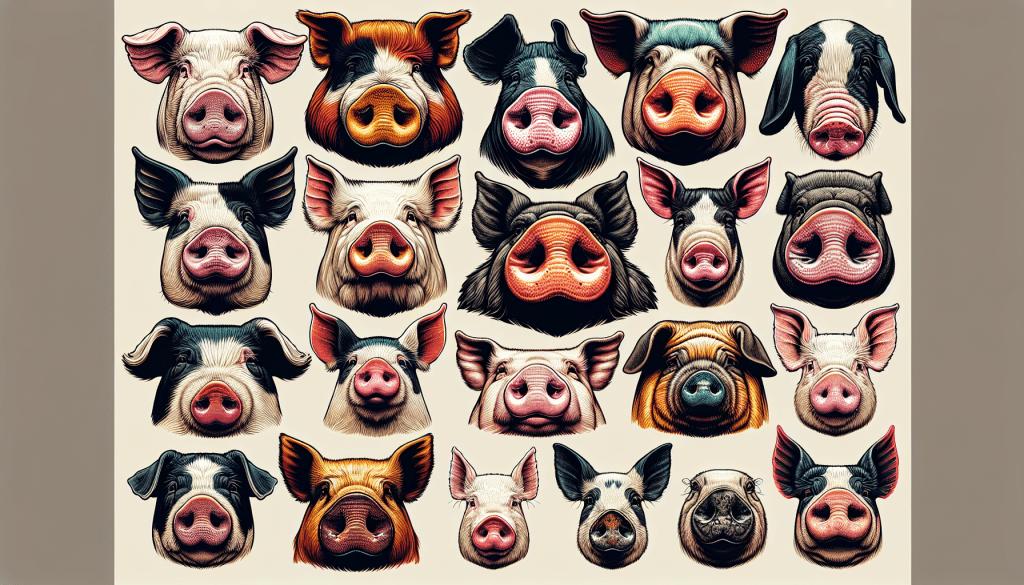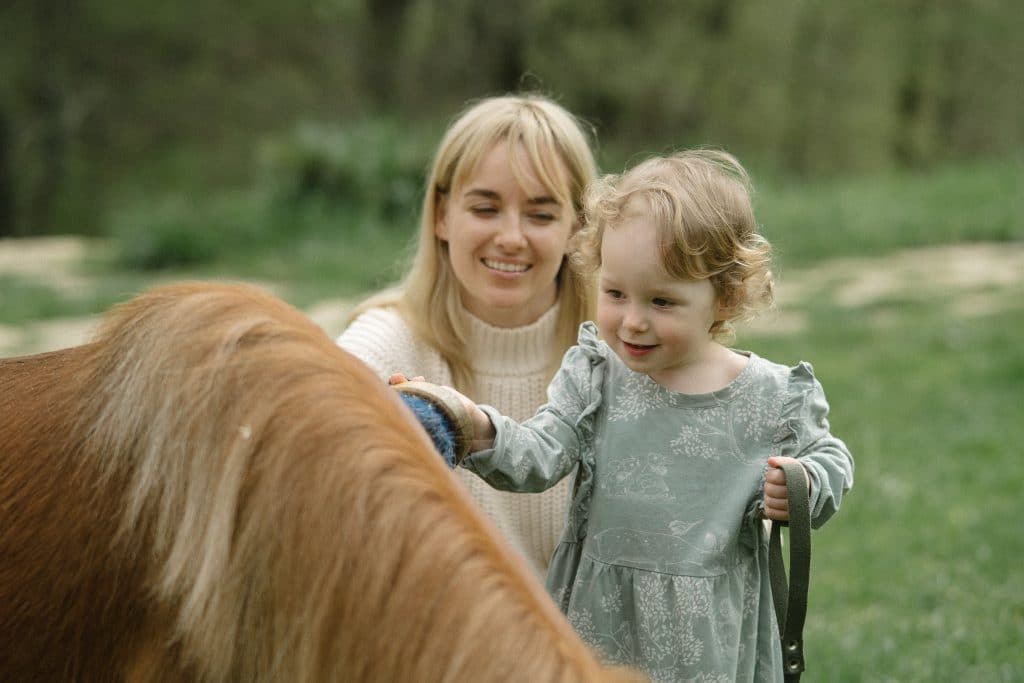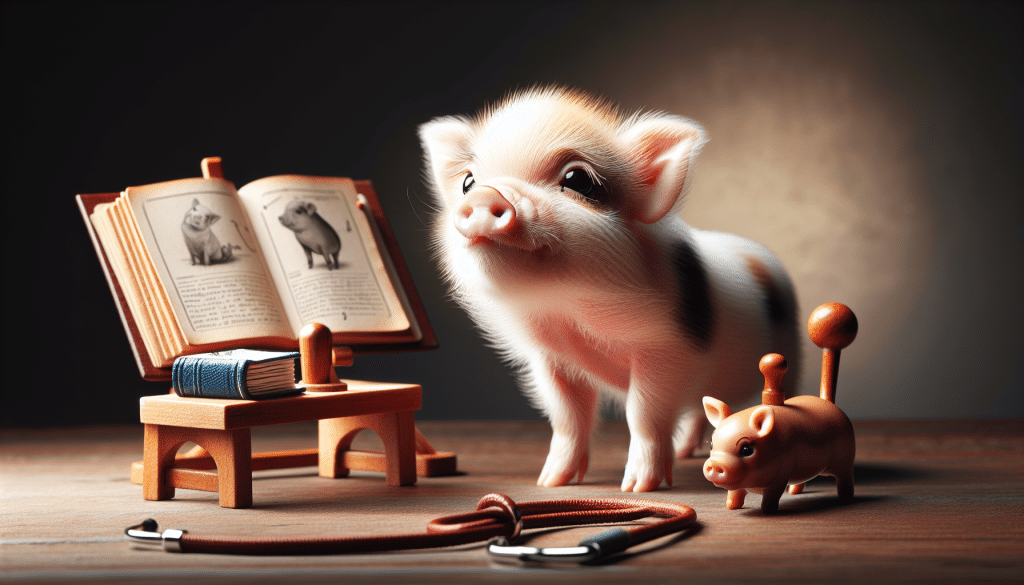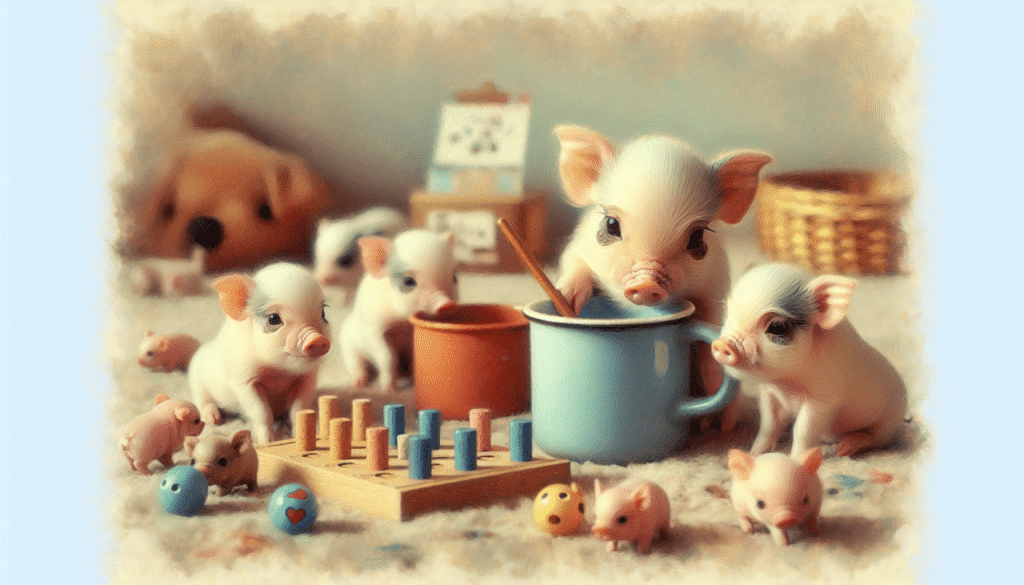So, you want to become an expert in identifying pig breeds, huh? Well, you’ve come to the right place! In this amusing and informative article, we’ll take you on a hilarious journey through the wonderful world of different pig breeds. From the majestic and curly-haired Mangalitsa to the adorably tiny and wrinkly Kunekune, get ready to learn about these charming swine and become the ultimate pig breed connoisseur. Who knew pigs could be this interesting? Get ready to meet the stars of the porcine world!

Understanding Pig Breeds
The Importance of Breed Diversity
When it comes to pig breeds, there’s a lot more to consider than just bacon and ham. The world of pig breeding is a fascinating one, filled with a wide variety of breeds that have their own unique characteristics. Breed diversity is essential for several reasons. Firstly, it ensures that there are pig breeds suitable for different purposes, such as meat production, showmanship, or even companionship. Secondly, it helps maintain a healthy population of pigs by preventing the extinction of any particular breed. Lastly, breed diversity allows for the development of improved traits through selective breeding, leading to more efficient and sustainable pig farming practices.
Basic Terminology in Pig Breeding
Before diving into the world of pig breeds, it’s important to have a basic understanding of the terminology used in pig breeding. Let’s start with some key terms:
- Sow: A female pig that has given birth.
- Boar: A male pig capable of breeding.
- Gilt: A young female pig that has not yet given birth.
- Barrow: A castrated male pig.
- Farrowing: The act of a sow giving birth.
- Litter: The group of piglets born in a single farrowing.
- Purebred: A pig that belongs to a specific breed and has ancestors of the same breed for many generations.
- Crossbred: A pig that is the result of breeding two different breeds together.
- Hybrid: A pig that is the result of crossing two different breeds or lines with desirable traits.
Now that we’ve covered the basics, let’s delve into the world of pig breeds.
Historical Significance of Pig Breeding
Pig breeding has a rich history dating back thousands of years. Domestication of pigs began in ancient times, with evidence of pig husbandry found in archaeological sites across the world. Pigs were highly valued for their meat, which provided a reliable source of food. Throughout history, different pig breeds were developed to suit the needs of different societies. For example, the Romans bred pigs for their large size, while the Chinese focused on creating smaller breeds suitable for urban environments. Pig breeding techniques evolved over time, and today we have a diverse range of pig breeds with a variety of traits and characteristics.
Modern-Day Applications of Different Pig Breeds
In today’s world, pig breeds are not solely bred for their meat. While meat production remains a significant aspect of pig farming, there are also breeds specifically bred for showmanship, research, and even companionship. Some pig breeds, like the Large White, are utilized primarily for their commercial value in the meat industry. Others, such as the Vietnamese Pot-Bellied, have become popular as pets due to their small size and friendly nature. Furthermore, crossbreeding different pig breeds can result in improved traits, such as increased litter size and better feed conversion efficiency. With the advancement of genetic technologies, pig breeders can now select for specific traits more effectively, leading to more productive and sustainable pig farming practices.
Large White
Origin and Development
The Large White, also known as the Yorkshire pig, originated in Yorkshire, England, in the early 19th century. It was developed through selective breeding of local pigs and imports, primarily from China. The goal was to create a large, lean, and easily marketable breed. The breed quickly gained popularity for its ability to produce high-quality meat and excellent growth rates.
Physical Characteristics
The Large White is a large, white-colored pig with a long, lean body. It has a straight profile, a long snout, and erect ears. The breed is known for its muscular build and good meat-to-fat ratio, making it an ideal choice for meat production. Adult boars can weigh up to 700 pounds, while sows can reach weights closer to 600 pounds.
Temperament and Behavior
Large Whites are known for their calm and docile nature, making them easy to manage. They adapt well to various environmental conditions and are generally less prone to stress-related issues. Their calm temperament also makes them suitable for intensive farming systems.
Commercial Value and Uses
The Large White is widely recognized as one of the best pig breeds for commercial meat production. Its efficient feed conversion rate and excellent growth rates make it highly desirable for the pork industry. The breed is known for producing lean and flavorful meat, making it popular among consumers. Large Whites are often used for crossbreeding to improve meat quality and productivity in other breeds.

Berkshire
Breed History
The Berkshire pig breed, originating from the English county of Berkshire, has a long and storied history. The breed is one of the oldest identifiable pig breeds in the world, with references dating back to the 17th century. Berkshire pigs were highly prized for their meat quality and were even granted the prestigious title of “Royal Breed” when Queen Victoria took an interest in them during her reign.
Distinct Features
Berkshire pigs are known for their striking black color, which sets them apart from many other pig breeds. They have a medium-sized, well-muscled body with a short and slightly dished face. One of the distinguishing features of Berkshire pigs is their white “socks” and “belts” – white coloring on their legs and around the middle of their body.
Culinary Relevance
Berkshire pork is often considered the gold standard for pork lovers and professional chefs alike. The breed’s marbled meat is renowned for its rich flavor, tenderness, and juiciness. The unique fat distribution enhances the taste, texture, and overall dining experience. Berkshire pigs are commonly used by high-end restaurants and artisanal charcuterie producers who value exceptional flavor and quality.
Conservation Status
Despite their culinary fame, Berkshire pigs faced extinction in the early 20th century due to changing agricultural practices and the rise of commercial pig production. Fortunately, dedicated breeders and conservationists stepped in to preserve the breed. Today, efforts are underway to maintain and increase the population of Berkshire pigs, ensuring their continued presence for future generations to enjoy.
Tamworth
Background and Evolution
The Tamworth pig, hailing from Tamworth in Staffordshire, England, is one of the oldest pig breeds of the British Isles. The breed has ancient roots, thought to trace back to the wild boars that once roamed the forests of Europe. Over time, selective breeding honed the characteristics of the Tamworth, resulting in a distinct and valuable breed.
Appearance and Identifying Traits
Tamworth pigs are known for their vibrant ginger or red coat, which sets them apart from other pig breeds. They have a long and lean body, with a slightly dished face and erect ears. One of the key identifying traits of the Tamworth is its long snout, which helps the pigs forage efficiently. With its sturdy build and strong legs, the Tamworth is well-suited for outdoor and extensive farming systems.
Breed Adaptability
Tamworth pigs are hardy and adaptable, capable of thriving in various climates and terrains. They have excellent foraging and grazing abilities, making them well-suited for pasture-based systems. The breed’s efficient conversion of pasture and forage into meat makes it an attractive choice for sustainable and regenerative agriculture practices.
Role in Sustainable Agriculture
With the growing interest in sustainable agriculture and pasture-raised meat, the Tamworth breed has gained renewed attention. Their ability to thrive on pasture, coupled with their resistance to common pig ailments, makes them an ideal choice for farmers looking to raise pigs in a more natural and eco-friendly manner. By preserving and promoting the Tamworth breed, we can contribute to a more sustainable and resilient food system.

Duroc
Breed Origins
The Duroc pig breed, named after the capital city of the American state of Iowa, has its origins in the United States. It was developed in the early 19th century by crossing various pig breeds, including the Red Duroc, the Jersey Red, and the Duroc-Jersey. The goal was to create a breed that exhibited superior growth rates, efficient feed conversion, and excellent meat quality.
Physical Traits and Growth Rates
Duroc pigs are known for their deep red or mahogany color, with a sprinkling of black hairs. They have a large, muscular body with a slightly dished face and drooping ears. The breed is recognized for its fast growth rates and efficient feed conversion, leading to increased profitability for farmers. Duroc pigs also have excellent carcass yield and meat quality, making them a popular choice for commercial meat production.
Duroc in Meat Production
The Duroc breed is highly valued by the pork industry because of its ability to produce premium-quality meat. Their meat is renowned for its marbling, tenderness, and juicy flavor, making it a favorite among chefs and consumers. Duroc genetics are often used in crossbreeding programs to improve meat quality and overall carcass traits in other pig breeds. The breed’s adaptability to various production systems and its desirable meat characteristics have solidified its place in the meat industry.
Breed Management and Health
Proper breed management and health maintenance are crucial for ensuring the success and well-being of Duroc pigs. Regular veterinary care, appropriate nutrition, and biosecurity measures are essential to prevent the spread of diseases and maintain a healthy herd. By prioritizing breed management and health, pig farmers can maximize the performance and productivity of Duroc pigs, leading to greater profitability and success in the pork industry.
Hampshire
Historical Context
The Hampshire pig breed has a strong historical connection to Hampshire county in England. It traces its roots back to the Old English Breed, which was brought to the United States in the early 1800s. The breed quickly gained popularity for its adaptability, meat quality, and ability to thrive in various climates.
Breed Characteristics
Hampshire pigs are easily recognized by their distinctive black coloring, with a white belt that wraps around their shoulders and front legs. They have a medium to large build, with a deep and broad body. The breed is renowned for its meat quality, particularly its leanness, texture, and superior carcass yield. Hampshire pigs also exhibit good feed conversion efficiency, making them an economically advantageous choice for pig farmers.
Economic Importance
Hampshire pigs play a significant role in the global pork industry, valued for their desirable meat characteristics and history of productivity. Their ability to produce lean meat, coupled with good growth rates, contributes to increased efficiency in meat production. Hampshire genetics are commonly used in crossbreeding programs to improve carcass traits and overall meat quality in commercial pig production systems.
Breeding and Genetic Quality
Maintaining genetic quality is essential for the long-term success of the Hampshire breed. Pig breeders focus on selecting animals with desirable traits, such as fast growth rates, good feed efficiency, and excellent meat quality. By carefully managing breeding programs and utilizing modern genetic technologies, breeders can improve the genetic quality of Hampshire pigs, ensuring their continued success in the pork industry.
Pietrain
The Origins of Pietrain
The Pietrain pig breed traces its origins back to the village of Pietrain in Belgium. It was developed in the mid-20th century through crossbreeding various Belgian pig breeds. The primary goal was to create a breed with exceptional meat quality and excellent growth rates.
Unique Genetic Markers
Pietrain pigs possess a unique genetic trait known as the “halothane gene,” which contributes to their exceptional meat quality. This gene enhances the tenderness and juiciness of the meat, resulting in a distinct eating experience. However, the halothane gene also makes Pietrain pigs more susceptible to stress-related conditions, requiring careful management and monitoring to maintain their well-being.
Meat Quality and Market Demand
Pietrain meat is highly regarded for its exceptional tenderness, succulence, and flavor. It is renowned for its lean composition, coupled with a generous marbling that enhances both taste and texture. The breed’s meat quality has led to high market demand, particularly in the gourmet and specialty pork sectors. Pietrain genetics are often utilized in crossbreeding programs to improve meat quality and carcass traits in other pig breeds.
Challenges in Rearing Pietrains
Rearing Pietrain pigs comes with its challenges due to the breed’s susceptibility to stress-related conditions and the halothane gene’s presence. Stress management, proper nutrition, and vigilant herd health monitoring are crucial to prevent and manage potential issues. Additionally, careful consideration must be given to the selection of breeding stock to maintain the desired meat characteristics without compromising animal welfare and overall well-being.
Vietnamese Pot-Bellied
Defining the Vietnamese Pot-Bellied
While many pig breeds are bred primarily for meat production, the Vietnamese Pot-Bellied breed has gained popularity as a pet. Originating from Vietnam, these small-sized pigs are known for their distinctive pot-bellied appearance, friendly demeanor, and high intelligence. Vietnamese Pot-Bellied pigs have become beloved companions in households around the world.
Pet Vs. Production Breed
Unlike other pig breeds, Vietnamese Pot-Bellied pigs are not typically raised for meat production. Instead, they are bred and kept as pets due to their small size, gentle nature, and adaptability to indoor living. These pigs can form strong bonds with their human families, often displaying affectionate and sociable behavior.
Health Considerations
Before considering a Vietnamese Pot-Bellied pig as a pet, it is essential to understand their unique health considerations. These pigs require a specialized diet, regular veterinary care, and proper socialization. Owners must provide adequate space and mental stimulation to ensure the well-being and happiness of their pet pigs. Responsible ownership and a commitment to meeting their specific needs are essential in providing a long and healthy life for these charming pigs.
Popularity and Ownership
The popularity of Vietnamese Pot-Bellied pigs as pets has steadily increased over the years. Their small size, intelligence, and sociable nature make them appealing to many animal lovers. However, it is important to note that owning a pig, even a small one, comes with responsibilities and challenges. Potential owners must thoroughly research and understand the needs and requirements of keeping a Vietnamese Pot-Bellied pig before making the decision to bring one into their home.
Landrace
Development of the Landrace Breed
The Landrace pig breed has a fascinating history, with its origins traced back to Denmark in the early 20th century. The breed was developed through extensive crossbreeding, incorporating various Danish, Swedish, and British pig breeds. The goal was to create a breed with exceptional maternal traits, such as high fertility, good milk production, and strong maternal instincts.
Notable Conformation
Landrace pigs have a distinctive appearance characterized by a long, deep body, a moderately dished face, and large drooping ears. They have whitish or light pink skin with sparse hair. The breed’s conformation, coupled with its excellent mothering abilities, makes it well-suited for farrowing large litters and raising piglets in commercial production systems.
Landrace in Global Pork Production
The Landrace breed’s maternal qualities and adaptability have made it a sought-after breed in the global pork industry. Crossbreeding Landrace genetics with other pig breeds can enhance important traits such as litter size, milk production, and piglet survival rates. This has led to increased efficiency and productivity in commercial pig farming, ensuring a consistent supply of pork for consumers worldwide.
Crossbreeding and Improving Genetics
Crossbreeding Landrace pigs with other pig breeds is a common practice to improve the genetic qualities of commercial pig herds. This strategic crossbreeding allows for the development of superior performance in areas such as litter size, growth rates, and mothering abilities. Careful selection of Landrace genetics and strategic breeding programs contribute to continually improving the overall productivity and sustainability of the pork industry.
Preserving Pig Breed Diversity
The Role of Breed Registries and Associations
Preserving pig breed diversity requires the coordination and efforts of various breed registries and associations. These organizations play a crucial role in maintaining breed standards, tracking pedigree information, and establishing guidelines for responsible breeding practices. By actively promoting and protecting different pig breeds, they help ensure the continued existence and genetic diversity of these valuable animals.
Educational Programs and Public Involvement
Education plays a vital role in raising awareness about the importance of pig breed diversity and sustainable farming practices. Educational programs, workshops, and public outreach initiatives help farmers, breeders, and the general public understand the value of preserving different pig breeds. By engaging and involving the public, we can foster a greater appreciation for the unique traits and characteristics of each breed and promote responsible pig farming practices.
Sustainable Farming Practices
Preserving pig breed diversity goes hand in hand with sustainable farming practices. Sustainable pig farming involves minimizing environmental impact, conserving natural resources, and prioritizing animal welfare. By adopting sustainable practices such as pasture-raising, rotational grazing, and regenerative agriculture techniques, farmers can create a more resilient and environmentally friendly food system while preserving the genetic diversity of pig breeds.
Global Collaborations for Breed Preservation
Preserving pig breed diversity is not limited to individual countries or regions. Global collaborations among farmers, breeders, researchers, and conservationists are crucial for maintaining genetic diversity on a larger scale. Initiatives such as germplasm banks, genetic research, and international breeding programs ensure the preservation and exchange of diverse pig genetics. By working together, we can conserve pig breeds for future generations and harness the full potential of their genetic diversity.
In conclusion, understanding pig breeds is not only entertaining but also important for ensuring the longevity and sustainability of pig farming. Each breed offers unique traits and characteristics that have been developed over centuries. By preserving breed diversity, we maintain a rich heritage, support sustainable agriculture, and foster future advancements in pig farming. So, next time you enjoy a slice of bacon or encounter a pot-bellied pig, take a moment to appreciate the fascinating world of pig breeds and the countless contributions they make to our lives.



